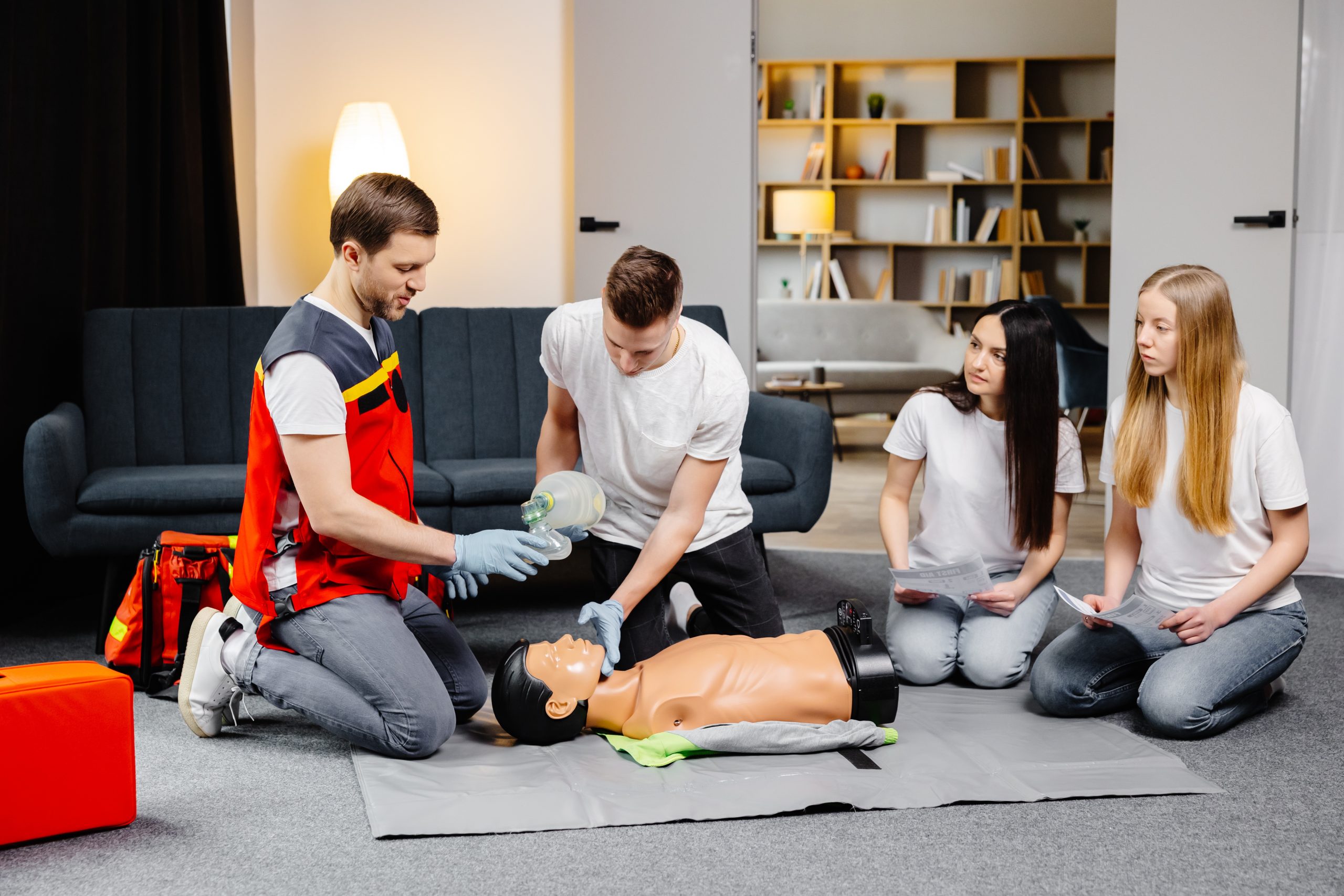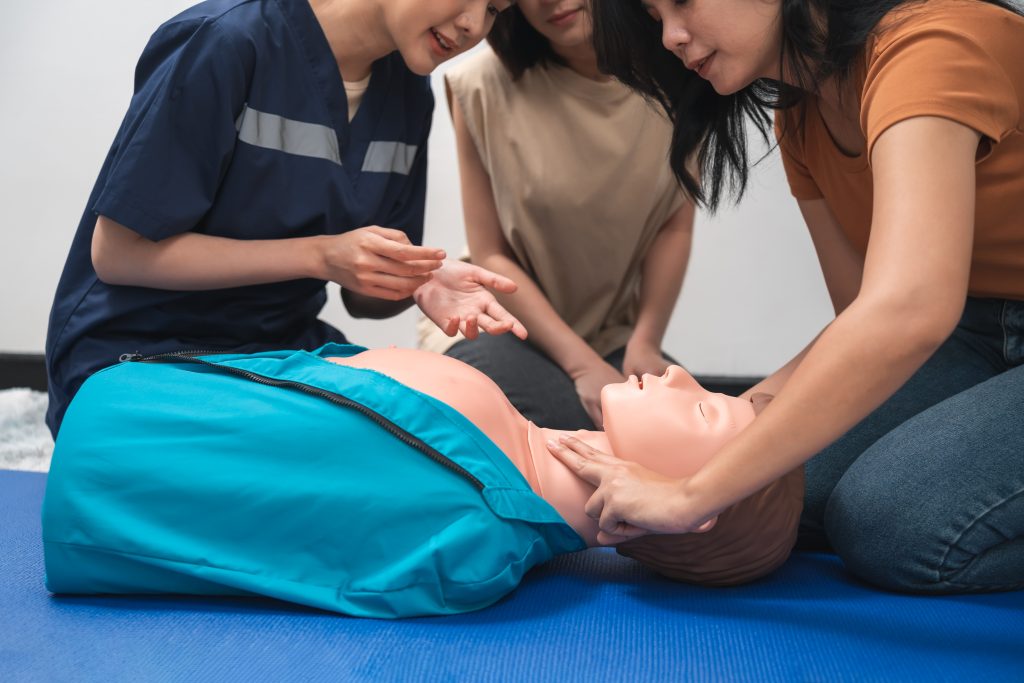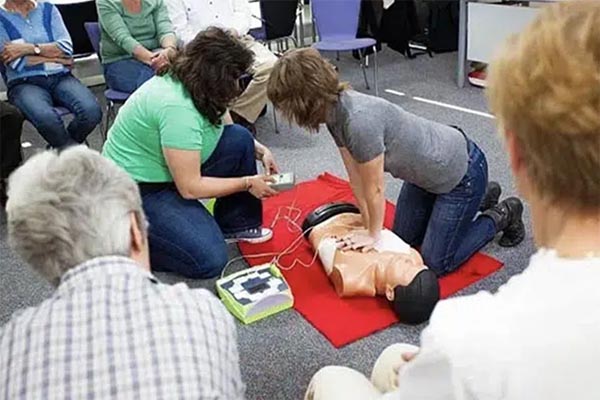
In any educational environment, the safety and well-being of students are the highest priorities. This responsibility extends beyond academic instruction to include being prepared for unexpected emergencies. The D.C. Public Schools (DCPS) system understands this profoundly, and as a result, has implemented specific and crucial requirements for its staff regarding CPR certification. This policy isn’t just a bureaucratic formality; it’s a critical, life-saving measure designed to create a safer environment for every student.
Navigating these requirements can sometimes feel complex. Who exactly needs to be certified? How often do you need to renew your certification? What type of training is acceptable? This blog post will serve as your comprehensive guide to understanding the “why,” “who,” and “how” of DCPS CPR requirements for staff. By the end, you’ll have a clear roadmap for ensuring you are not only compliant with school policy but also fully prepared to act as a first responder in a medical emergency. Whether you are a teacher, administrator, coach, or support staff member, your role in student safety is paramount. Let’s dive into what you need to know to meet these vital standards.
Why Are CPR and AED Certifications Mandatory for DCPS Staff?
The mandate for CPR and AED certification among D.C. Public Schools staff is fundamentally about proactive risk management and creating a safety net for students. While we hope for a school year free of medical emergencies, the reality is that they can and do happen. Cardiac arrest, choking incidents, or other health crises can strike without warning. The time between a medical emergency occurring and the arrival of professional emergency medical services (EMS) is often the most critical window for intervention.
For every minute that passes without CPR, the chance of survival from cardiac arrest decreases significantly. This stark statistic highlights the immense value of having trained personnel on-site at all times. By requiring staff to be certified, DCPS ensures that there is always someone available who can provide immediate, life-sustaining care. This rapid response can literally be the difference between life and death. The policy isn’t just a recommendation; it’s a strategic investment in the well-being of the school community.
Furthermore, the requirement often includes training in the use of an Automated External Defibrillator (AED). These devices are becoming increasingly common in public spaces, including schools. An AED can deliver a life-saving electrical shock to a person in cardiac arrest. Knowing how to operate one correctly and in conjunction with CPR can dramatically improve a person’s chances of survival. A staff member with both CPR and AED skills is a powerful asset, capable of providing the highest level of non-professional care available until paramedics arrive. This comprehensive approach to safety prepares the school community for a wide range of potential emergencies.
The policy also fosters a culture of preparedness and shared responsibility. When multiple staff members are certified, it distributes the safety burden and ensures that no single individual is solely responsible in a crisis. It empowers every employee, from the classroom teacher to the janitorial staff, with the confidence and skills to act decisively and correctly when it matters most. This collective readiness not only protects students but also builds a more secure and resilient school environment for everyone.

Who Exactly Needs CPR Certification in D.C. Public Schools?
The D.C. Public Schools’ policy on CPR certification is broad and designed to cover a wide range of personnel who interact directly with students. It’s not just a requirement for health-related staff; it applies to anyone who might be in a position to respond to a medical emergency. The general principle is that if you are a DCPS employee and have direct supervision or interaction with students, you are likely required to be certified.
The most commonly affected groups include:
- Teachers: All classroom teachers, regardless of grade level or subject, are typically required to have and maintain current certification. They are on the front lines, and often the first to notice a student in distress.
- School Administrators: Principals, vice-principals, and other administrative staff must also be certified. Their role involves overseeing the entire school, including emergency protocols, and they need the skills to lead and respond effectively.
- Coaches and Athletic Staff: This is a particularly critical group. Physical activities carry a higher risk of injury and medical events. Coaches and athletic trainers must be certified to respond to emergencies on the field, in the gym, or during practice.
- School Nurses and Health Aides: While they have more extensive medical training, they are still required to hold current CPR certification, as it is a foundational skill for their role.
- Support Staff: This can include a variety of roles such as school bus drivers, cafeteria workers, and paraprofessionals. Their duties often involve direct supervision or interaction with students, making their certification just as important.
It’s important to note that the specific list can vary slightly depending on the exact position and school policy updates. The best practice for any DCPS employee is to consult with their direct supervisor, the school’s human resources department, or the official DCPS policy handbook to confirm their individual requirements. This ensures that every staff member understands their specific obligations and can take the necessary steps to remain compliant. The goal is to have a comprehensive network of trained individuals throughout every school building, ensuring that a life-saving responder is never far away.
What Are the Specific CPR Certification Standards for DCPS Staff?
To meet the D.C. Public Schools’ requirements, a CPR certification must adhere to specific standards. It’s not enough to simply complete any online course or watch a few videos. The certification must come from a credible, nationally recognized organization and be a hands-on, skills-based program.
The two most widely accepted and reputable certifying bodies are:
- The American Heart Association (AHA): Their “Heartsaver” and “BLS” (Basic Life Support) courses are excellent options. Heartsaver courses are designed for the general public, while BLS is geared more towards healthcare providers, but both are often accepted. These courses include a combination of lectures, video instruction, and, critically, hands-on practice with manikins to ensure students can perform the skills correctly.
- The American Red Cross: Their “Adult and Pediatric First Aid/CPR/AED” course is another highly respected and widely accepted option. Similar to the AHA, the Red Cross emphasizes practical, hands-on training to build muscle memory and confidence in performing the skills.
Both organizations require a practical skills check, which must be completed in person. While some courses may have an online component for the lecture part, the hands-on portion is non-negotiable for DCPS compliance. This is because effective CPR is a physical skill that cannot be learned through a screen alone. Proper chest compression depth and rate, and correct hand placement, are all critical techniques that require in-person instruction and feedback.
The certification must be current. Most CPR certifications are valid for a period of two years. This means that DCPS staff must periodically renew their certification to ensure their skills are up-to-date and compliant with the latest guidelines. The two-year renewal cycle is standard across the industry and is based on a need to refresh memory and adapt to new best practices in resuscitation science. For DCPS employees, keeping track of this renewal date is a personal responsibility that is essential for maintaining their employment and, more importantly, for being ready to help in an emergency.
How Can DCPS Staff Get and Maintain Their CPR Certification?
Obtaining and keeping your CPR certification current as a DCPS employee is a straightforward process once you know the steps. The first step is to identify an authorized training provider. The organizations mentioned previously, such as the American Heart Association and the American Red Cross, have extensive networks of local training centers and instructors. A simple search for “CPR classes” will reveal many options.
Here’s a step-by-step guide:
- Find a Reputable Provider: Look for a training center that is officially sanctioned by the American Heart Association or the American Red Cross. This ensures that the curriculum and certification are up to the required standards. Many local community centers, fire departments, and private training companies offer these courses.
- Choose the Right Course: Make sure the course you enroll in includes both CPR and AED training. As mentioned, a blended learning approach with an online portion and a required in-person skills session is a very popular and convenient option. The in-person session is critical for meeting DCPS requirements.
- Complete the Training: The course will typically involve learning about the signs of a cardiac emergency, how to perform chest compressions, administer rescue breaths, and use an AED. You will practice these skills on a manikin under the supervision of a certified instructor.
- Receive Your Certification Card: After successfully completing both the cognitive and skills portions of the course, you will be issued a certification card. This can be a physical card or, more commonly now, an e-card that you can access and print online.
- Submit Proof to DCPS: Be sure to provide a copy of your new certification card to your school’s administrative office or human resources department. They will need this document for their records to confirm your compliance.
To maintain your certification, you must renew it before the expiration date. Most certifications are valid for two years. A reminder system, like a calendar alert or an email from your training provider, can be a great way to ensure you don’t miss the renewal window. Renewing your certification is not just a formality; it’s a chance to refresh your knowledge and skills, ensuring you are always ready to respond to a life-threatening situation. The investment of time and money in this training is a small price to pay for the peace of mind it provides and the potential to save a life.

Conclusion
The D.C. Public Schools’ CPR requirements for staff are a testament to the school system’s commitment to student safety. By mandating that a wide range of employees be trained in cardiopulmonary resuscitation and the use of an AED, DCPS has created a powerful safety net that can mean the difference between life and death in a medical emergency. This policy is not about creating an extra burden; it is about empowering every single staff member with the skills and confidence to act decisively and correctly when a child’s life hangs in the balance.
Understanding these requirements is the first step toward compliance. Knowing who needs certification, what standards the training must meet, and how to get and maintain your certification is crucial for all DCPS employees. It’s a professional obligation that carries a profound personal reward: the ability to save a life. Taking action to get certified or to renew your existing certification is a step you can take today to ensure that your school community is as safe as it can possibly be.
If you are a DCPS staff member in need of CPR certification or renewal, don’t wait. Contact CPR Classes Near Me today to find a convenient, hands-on training course that meets all the requirements. We can help you gain the skills and confidence you need to make a difference.
FAQs about CPR Certifications for DCPS
Q1: What is the primary purpose of the CPR certification requirement for DCPS staff?
A1: The primary purpose is to ensure that trained personnel are always available to respond to medical emergencies involving students or other staff members. The requirement is a proactive measure to improve the chances of survival from cardiac arrest or other life-threatening events by providing immediate, life-sustaining care until professional emergency medical services (EMS) arrive. It’s a key part of creating a safe and secure environment for everyone in the school community.
Q2: Can I get my CPR certification for DCPS requirements entirely online?
A2: No, you cannot. While some courses offer a “blended learning” format where you can complete the instructional portion online, D.C. Public Schools, like most reputable organizations, requires a hands-on, in-person skills session. This practical component is critical because CPR is a physical skill that must be performed correctly. You need to demonstrate proper chest compression technique, hand placement, and AED use under the supervision of a certified instructor to receive a valid and compliant certification.
Q3: How long is the CPR certification valid for DCPS employees?
A3: The CPR certification for DCPS staff is typically valid for two years. This is the standard duration set by major certifying bodies like the American Heart Association and the American Red Cross. It is the responsibility of each staff member to keep track of their expiration date and renew their certification before it lapses. Renewing regularly ensures that your skills and knowledge are up-to-date with the latest emergency care guidelines.
Q4: Does the CPR certification need to include AED training?
A4: Yes, it is highly recommended and often a mandatory component of the certification required by DCPS. The use of an Automated External Defibrillator (AED) is a crucial part of the chain of survival for a person in cardiac arrest. Knowing how to use an AED correctly in conjunction with CPR can dramatically increase a person’s chances of survival. Most reputable CPR courses for lay rescuers and school staff include comprehensive AED training.
Q5: What should I do if my CPR certification is about to expire or has already expired?
A5: If your certification is about to expire, you should schedule a renewal course immediately. If it has already expired, you must take a new certification course, as expired certifications are not valid for employment compliance. You should inform your school’s administration or human resources department about the situation and provide proof of your new certification as soon as you receive it. Taking prompt action ensures you remain compliant with DCPS policy.

Leave a Reply